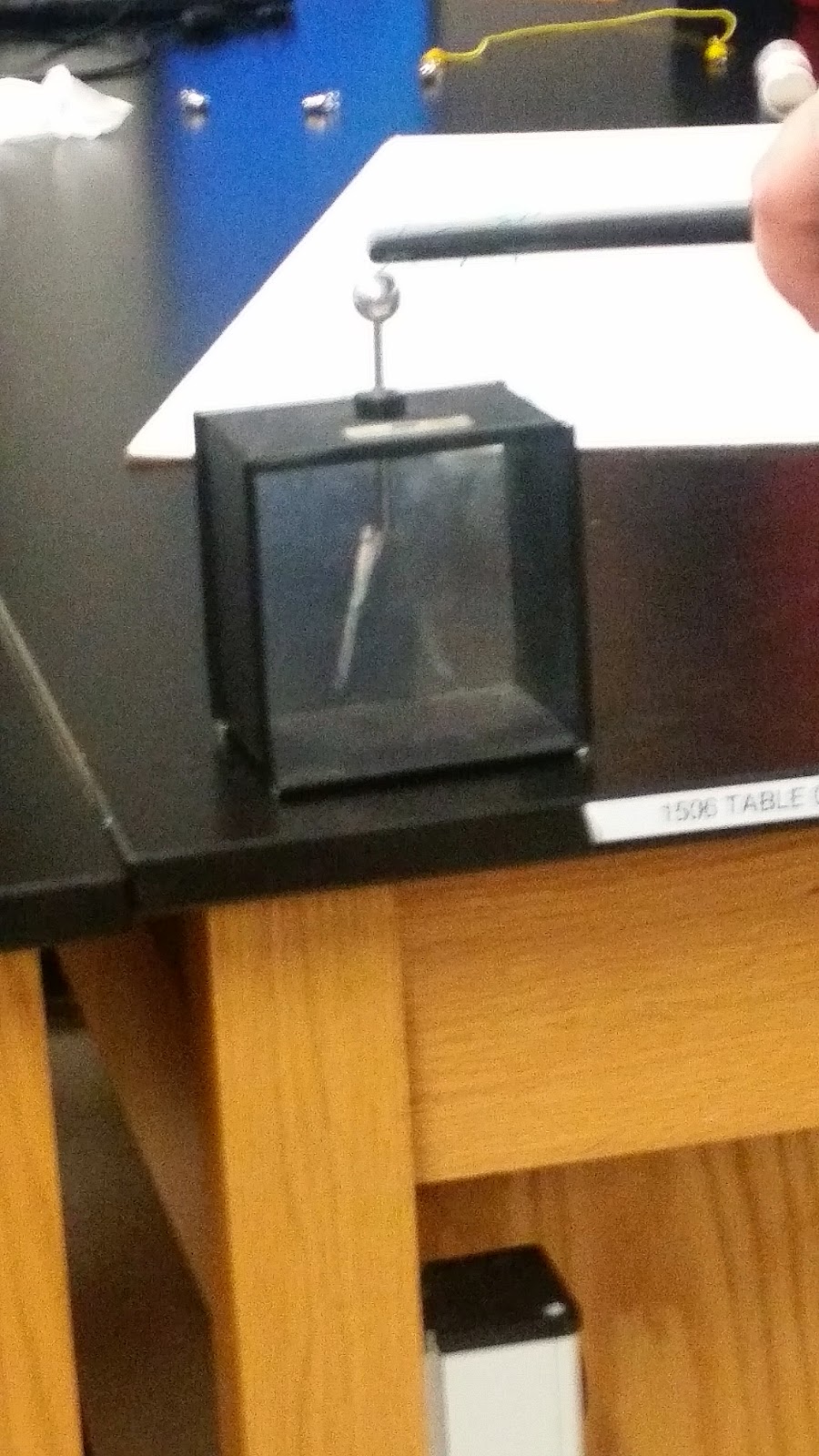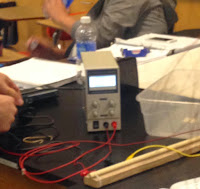Lab day 12: 4/9/15: Current, Voltage, Resistivity
Purpose: We look at the different relationships between current, voltage, and resistivity using light bulbs, batteries, and multimeters that allow us to find physical and qualitative meanings to each. The idea of lighting a bulb and connectivity will be analyzed.
Lighting a Light Bulb
We started off class by lighting a light bulb using a battery and a wire. This was done by closing the circuit connecting a wire from the positive terminal to the negative terminal. We were able to look at the basic usage of light bulbs, wires, and batteries. A light bulb consists of a filament that is attached to the end of a bulb which is then attached to the other side of the battery.
We went on to analyze different rearrangements of light bulbs which allows it to light up. When the light bulb filament is not directly on the bulb of the battery, the light bulb will not light up. The light bulb will also not light up when it is not in a closed circuit. This is due to the fact that the electric flow doesn't pass through the filament which is what makes the bulb lit. Therefore the way it lights up is when the bottom end of the battery is connected to the top bulb which has a filament connected to the top end of the battery creating a closed circuit.
Making it Brighter
We found that when two batteries are put together, the light bulb becomes twice as bright. The light bulb is seen to shine brighter due to more work being done which supplies energy to the bulbs.
Electroscope
When we supplied a positive charge to the electroscope, we observed that nothing happened. In fact the reason is because in a battery, we can see that a current is being supplied which causes electrons to flow which means work is being done on the bulb to make it lit.
In fact an important point to be made is that a wire is needed to go back from the bulb to the battery because it allows electrons to flow in and out of the battery resulting in an equilibrium charge in which work is being done to supply the energy.
We can find the power of this setup using P=IV and we see that a 1.5 volt battery will supply a power of 0.18 J/s .
Old Ammeter Experiment
In this experiment we are able to measure the current that flows into the battery and the current that flows out of the battery using an ammeter. We predicted that it would be the same current in and out as what goes in should be the same going out through the wires.
The current did end up being the same as the current going out of the wire which proves that the work being done to light the bulb does not affect the current running through the wires even if energy is being used. Therefore we can restate that current does not change with the energy.
The drift velocity was calculated where it is the velocity of the flow current of electrons. The drift velocity depends on the electron charge, area, the number density, and the current. It is found that current flows through the wire where there is a cross sectional area of the wire which can be used with the current and constant to find the drift velocity. The value we calculated has a magnitude that is small where electrons move very slow.
When we look at current and voltage relationship, we predict that it is proportional and increases linearly. The charge is also constant and proportional in a similar fashion. The experimental results show that this is true and that there is a dependence on resistance which is the type of material used. Including resistance we get Ohm's law V=IR which explains the relationship between voltage, current, and resistance.
















No comments:
Post a Comment